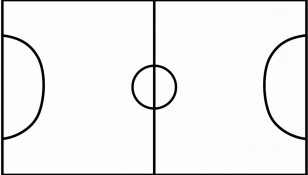Ranking Tennis: A Comprehensive Guide to Understanding and Comparing Different Ranking Systems

Ranking Tennis: A Comprehensive Guide to Understanding and Comparing Different Ranking Systems
Introduction
In the world of tennis, rankings play a crucial role in determining a player’s standing and providing a reference point for their performance. This article aims to provide a thorough overview of ranking tennis, including its various types, popularity, quantitative measurements, differences, and historical pros and cons.
Overview of Ranking Tennis

Ranking tennis refers to the process of assessing and categorizing tennis players based on their performance and achievements. It is a system that enables players, fans, and organizers to gauge a player’s standing on both a national and international level. The primary purpose of ranking tennis is to establish a hierarchy among players, allowing for fair competition and accurate seedings in tournaments.
Comprehensive Presentation of Ranking Tennis
1. Types of Ranking Systems: There are numerous ranking systems used in tennis globally. Some of the most prominent ones include the ATP Tour Rankings for professional male players, the WTA Rankings for professional female players, and the ITF World Tennis Ranking for both genders. Each ranking system differs in its methodology, factors considered, ranking points distribution, and the tournaments it accounts for.
2. Popular Ranking Systems: The ATP Tour Rankings and the WTA Rankings are widely regarded as the most prominent and popular ranking systems. These rankings are updated regularly and serve as the primary reference for evaluating professional players’ performances. The ATP Tour Rankings are based on a 52-week rolling period, while the WTA Rankings consider the best 18 tournament results over the past 52 weeks.
Quantitative Measurements in Ranking Tennis
Ranking points are the foundation of quantitative measurements in ranking tennis. Various factors determine the allocation of points, such as tournament category, level of opposition, and player performance. The number of ranking points earned in a tournament shapes a player’s overall ranking and influences their eligibility for higher-level tournaments. The ATP and WTA ranking systems have specific point distribution structures, which are adjusted periodically to maintain the relevance and competitiveness of the rankings.
How Ranking Tennis Systems Differ from Each Other
1. Calculation Methodology: Different ranking systems rely on distinct methodologies to calculate a player’s ranking. Some systems consider the best results over a specific period, while others adopt a rolling calculation. The weightage assigned to each tournament and the inclusion of bonus or deduction factors also differ.
2. Tournament Consideration: Ranking systems vary in terms of tournaments they include. Some rankings focus on specific types of events, such as Grand Slam tournaments, while others consider a broader range, incorporating different tiers of tournaments. The extent to which lower-level or domestic tournaments contribute to a player’s ranking also differs among ranking systems.
Historical Pros and Cons of Ranking Tennis
1. Pros of Ranking Tennis: Ranking systems bring structure and order to tennis, allowing players to have clear goals to strive for and enabling fans to follow the progress of their favorite players. They provide a fair basis for tournament seedings and entry conditions and help in promoting the sport globally.
2. Cons of Ranking Tennis: One common criticism of ranking systems is that they do not always reflect a player’s true ability or potential accurately. Certain systems may favor players who specialize in specific playing surfaces or those who participate in a higher number of tournaments. Additionally, limited access to international tournaments for players from certain countries can hinder their rankings and exposure.
Conclusion
Ranking tennis serves as a crucial tool in the tennis world, allowing players, fans, and organizers to assess and compare the performance of players accurately. Understanding the different types of ranking systems, their quantitative measurements, variations, and historical pros and cons is essential. By doing so, players and fans can gain valuable insights into the tennis hierarchy and appreciate the complexities of ranking tennis.

















